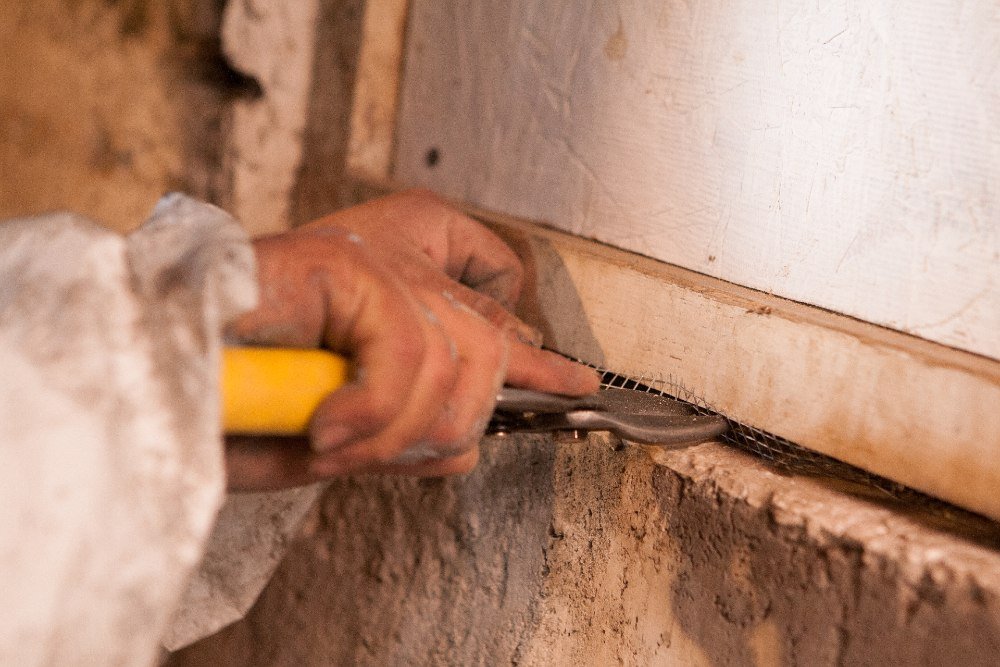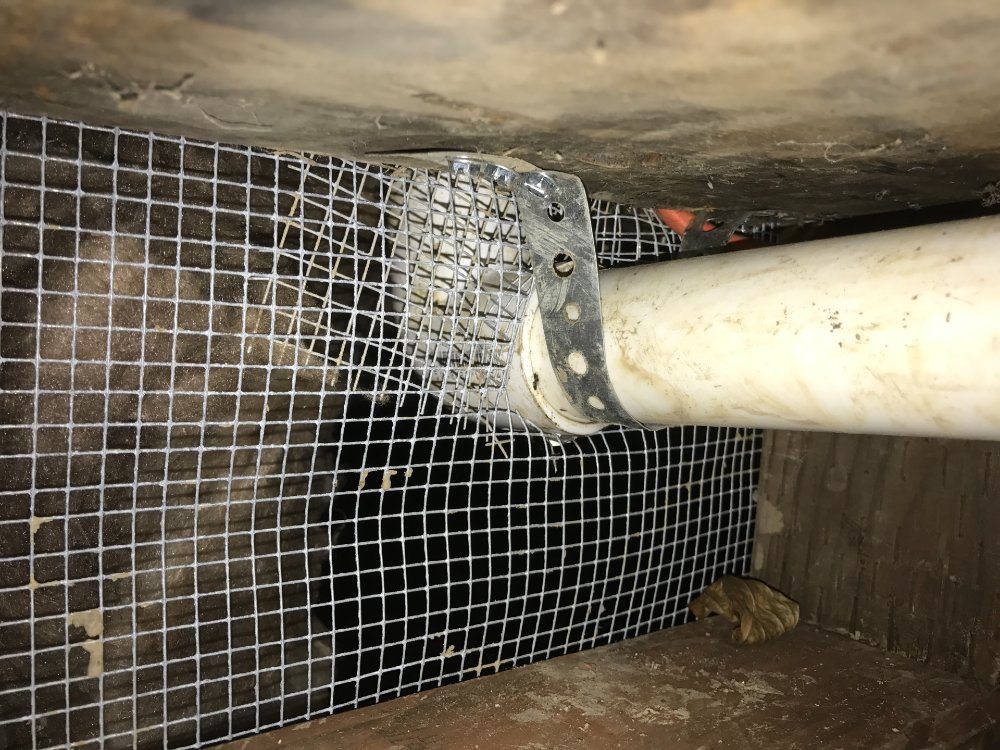Do you know how to spot the difference between mice and rats? Knowing how to tell if you have rats or mice is key to keeping your home rodent-free.
Generally in the Pacific Northwest, rats and mice become more active when the temperature cools down near the end of summer and early fall. A drop in the weather’s temperature signals these pests to look for warm spaces to reside in as the seasons change. Although mice and rats do not hibernate, they do seek out a promising shelter to provide protection and warmth throughout the winter.
If you suspect that mice and rats may be active on your property or home, call a professional pest control service, like Pest Pros, to investigate the problem before it’s too late.
Mouse vs. Rat
While the similarities between mice and rats are physically apparent, the differences between mice and rats are also evident – if you know what to look for.
Rats are typically much larger than mice and appear to have more coarse hair on their body. Mice are often smaller and have fluffier hair. Aside from physical appearance, the size of animal droppings is used during mouse identification and rat identification. Unsurprisingly, rat droppings are much larger than mice droppings.
Behaviorally, mice are more curious and less savvy than rats – leaving them more vulnerable to be trapped than rats.
Rats and mice do not share the same appetite. Each pest will scavenge for different types of food and will consume different amounts of food.
While both rodents present a clear and present concern to your home’s structure and your health, rats are often a more significant threat due to their increased size and strength.
Types of Mice
Common types of mice found in the Pacific Northwest are deer mice and house mice.
Deer mice are about 4-inches long, have prominently large ears compared to other mice and have darker fur on the top of their bodies and ears. They may also be distinguished by their white-colored underbelly.
The house mouse, most commonly spotted in and around houses in the Pacific Northwest, is smaller than a deer mouse – reaching only 3 inches long without measuring its long slender tail. A house mouse typically has light brown-colored fur all over its body, medium-sized ears, and a pointy head.
Mouse Identification
Knowing how to tell if you have mice in your home can help you understand what type of pest infestation you may encounter in or around your house.
Mice are only 12 to 20cm long, including their long and thin tails. They are known to have floppy and large ears compared to their body size. A mouse’s whiskers are long and their snouts are triangular. They range from having white, brown, and grey hair. Mice are tiny and weigh little compared to other larger pests.
Mice, a crucial animal in every ecosystem, are territorial and naturally timid yet social creatures. Mice are skilled and active climbers who will prove as such if they infiltrate your home.
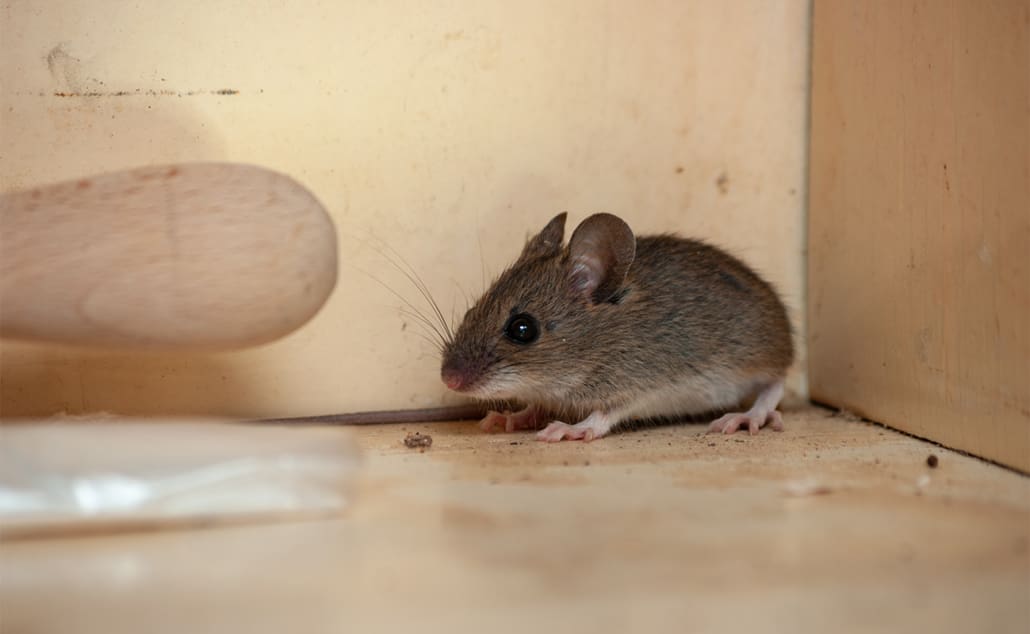
Types of Rats
The two main types of rats you may see in your Pacific Northwest house are Norway rats and roof rats.
Norway rats, also known as brown rats, are large in stature; averaging 16 inches in length including their tail. Their ears are average size compared to their body. Norway rat’s hair is typically coarse and grey or brown-colored.
Roof rats, also referred to as black rats, are similar in length to Norway rats however are more slender and smaller. Their hair is coarse and is usually black or dark brown-colored. Roof rats like to climb – leading them to explore rooftops, upper levels of buildings, and trees.
Norway rats and roof rats are both known for their long tails that span longer than their body and head combined.
Rat Identification
If the pest you encounter is larger than your fist, it’s likely a rat. They are notably heavier than mice. A rat’s hair is much more coarse than a mouse’s hair and their long tails will appear hairless.
Rats are known to stay in close proximity to where they find shelter and nest, only leaving to find food, water, and protect their territory. If you have pests scurrying across your kitchen floor during the night, you may be dealing with a rat infestation.

How To Tell If You Have Rats or Mice
Physical Appearance
- Mice are small and have fluffy hair on their body.
- Rats are larger than mice and have coarse hair on their body.
Droppings
- Mice produce more waste droppings than rats.
- Rat waste droppings are larger in size than mice waste droppings.
Location
- Mice climb and hide in smaller areas like attics, ceilings, and walls.
- Rats remain in low areas near the ground such as crawl spaces and sheds.
Signs of Damage
- Mice chew through small wires and cables.
- Rats chew through wires, cables, containers, pipes, and other structural materials.
Food
- Mice seek out fresh produce, nuts, seeds, grains, and unstored meat.
- Rats are more likely to seek out foods that are packaged such as dry pet food, cheeses, and stored meats.
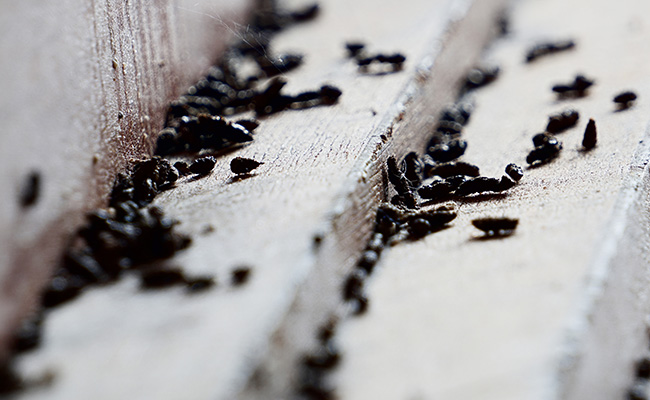

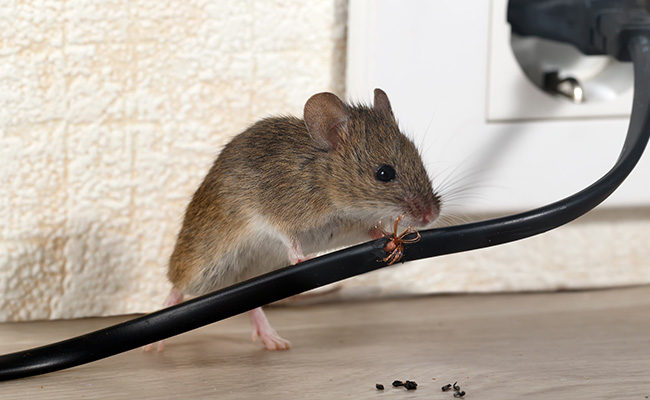
Why Are Mice Problematic?
Although mice are smaller and weaker than rats, they can still gnaw at wires and other small electrical cables that run throughout the structure of a home causing a major fire hazard to a home. Damaged wiring can result in long-term wiring issues that can be expensive and complicated to fix.
Mice can spread bad bacteria and diseases throughout a home and cause individuals to adopt health issues and become sick. Female mice are known to have a new litter of baby mice every three weeks and reproduce 300 times in their lifetime.
If you find that you have mice in your home, you will want to call a professional pest control company, like Pest Pros, as soon as possible to be sure the mice infestation does not grow.
Why Are Rats Problematic?
Rats can cause structural damage to a house quicker than mice. Rats are able to damage metal and plastic pipes, plastic, wooden beams, concrete, and cinder blocks along with wires and electrical cables. If rats have time to work on these structural materials, there can be major damage done to the insulation of walls, ceilings, attics, and crawl spaces.
Just like mice, rats can spread bad bacteria and diseases posing health risks to individuals. Additionally, a female rat can produce as many as 7 rat litters per year resulting in 84 offspring per year.
If you suspect a rat infestation in your home – you’ll want to be sure to contact a professional pest control company, like Pest Pros, to identify and resolve the issue.
How To Prevent Rat Or Mouse Infestation:
- Remove clutter which eliminates hiding and nesting areas for rats and mice.
- Seal cracks and holes in walls, vents, electrical line holes, and surrounding doors.
- Store food properly, in airtight containers, lifted off the ground.
- Maintain a clean house and property. Secure garbage in enclosed containers.
How To Get Rid Of A Rat Or Mouse Infestation:
While these DIY methods will help you offset further infestations, they may also be dangerous to perform and are shown to be less effective than professional pest control services. Avoid using rat poisons that will cause pests to rot in walls, attics, and crawl spaces. Rat poison can be dangerous to humans and animals. At Pest Pros, we highly suggest you contact a professional at the first sign of a rat or mice infestation.
- Place rodent traps in suspected pest-infested areas. Traps come in a variety of types.
- Use food such as peanut butter as bait along with rodent traps.
- Use natural repellents to scare off mice and rats from entering your home.
The best way to get rid of a rat or mouse infestation is to call a professional pest control company, like Pest Pros, to inspect your home for an infestation, identify the problem and find the best strategy to solve the pest infestation.

Contact a Professional Pest Control Company: Pest Pros
At Pest Pros, it’s our goal to provide services that resolve any current rat or mouse infestation issue and prevent further pests from entering and damaging your home.
When you work with Pest Pros, you will receive nothing less than excellent customer service from our team’s prompt, forward-thinking, and professional services. Call us or contact us for your free estimate today!
Squirrels, while a delight to see roaming the trees in the wild, should do just that — stay in the wild. Squirrels in your home, specifically in your attic, can cause serious damage to your property. This damage primarily includes biting electrical wiring, insulation, and boards.
To preserve the integrity of your home, it’s important to get rid of squirrels in your attic as soon as you identify them. In this article, we’ll cover how you can tell if there are squirrels in the attic, how squirrels get in the attic, what to do if you discover them there, and how to prevent them from returning (hint: it’s best left to the professionals like those at Pest Pros).
How to Tell if There Are Squirrels in Your Attic
Hearing scratching, scurrying, or chewing sounds coming from the attic? It’s likely squirrels! A few signs of squirrel infestation in your attic include the sounds mentioned before, as well as teeth marks in the wood, air vent damage, or chewed electrical wires. Squirrels will chew through anything to find warmth and shelter, and that includes all entryways to your attic and anything that may get in their way.
Additionally, you may notice squirrel footprints (distinguishable by their 4-toed front paws and 5-toed back paws). Foul odors coming from the vents may also be a sign of squirrel urine, or, even worse, dead and decaying squirrels. The potent odors are certainly unpleasant, and a sign of squirrels in the attic.
If you dare venture into the attic, you may also find nests, squirrel droppings, and, of course, acorns. Squirrels will use insulation to build their nests, so any disturbed, ruffled, or destroyed insulation may be a sign. Scattered droppings surrounding the nesting area are also an indicator, as well as dangerous and bacteria-ridden. You may also see deposits of acorns, stored away for winter months, a sure sign of squirrels.
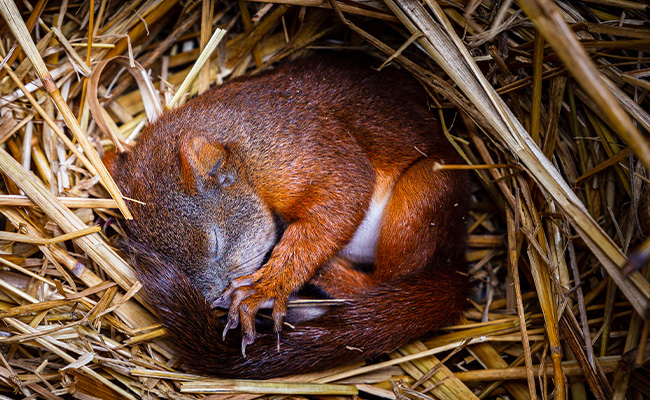
How Squirrels Get in the Attic
There are several ways a squirrel can enter your attic, a space where they are likely to mate, build dens, or hide from cooling weather. The following are the most common ways a squirrel can enter your attic:
- Roof Vents & Edges: When the weather cools off, the warm air coming from roof vents is a siren call to squirrels looking for a cozy space to nest. With sharp teeth, they can easily chew through the plastic and aluminum vent covers. For the roof edge, an accumulation of water and snow tends to degrade the material faster than other parts of the roof, making it easier for squirrels to chew through.
- Gable & Wall Vents: Gable vents are designed to circulate air through the attic, and their composition of wood, plastic, or aluminum is no match for squirrels seeking shelter. From there, they are able to find their way up into the attic. Wall vents are often paired with an exhaust on the exterior of the home, resembling a tree cavity in which squirrels can nest. This creates unsanitary conditions and fire hazards.
- Chimneys: Uncapped chimneys are an unrivaled invitation for squirrels. They may be able to come and go from the chimney into your attic, allowing them to create cozy nests in your home.
What to Do if There Are Squirrels in the Attic
Surely, above all else, you’re curious about how to remove squirrels from the attic. While it’s best left to the professionals, there are a few things that you, as a homeowner, can do when there are squirrels in the attic.
- Locate the squirrel nest: Materials like cardboard, leaves, and insulation are all signs of a squirrel nest in the attic. There may be baby squirrels present between February and May, or August through October. If that is the case, it’s recommended that you wait a few weeks until they are old enough to leave their mother to remove them.
- Seal attic openings: As mentioned above, there are several ways that squirrels can enter your attic through the roof and vents. They are able to fit through small entry points, so it’s important to seal them off using wire and caulking. However, to avoid dead squirrels in the attic, leave one entry point open so the squirrels can leave.
- Trap squirrels using a one-way cage door: To remove the squirrels, you can trap them by installing a one-way cage door outside the remaining open entry point. This way, you can trap the squirrels as they leave, relocate them, and seal that entry point. However, it’s important to check your local laws before trapping them, because it is illegal in certain states to trap and relocate nuisance wildlife.
- Call the professionals: The best thing you can do to remove squirrels from the attic is to call a professional pest control company. Companies like Pest Pros have the tools to safely and effectively remove squirrels from the attic. Our staff is trained to remove pests and prevent them from coming back.

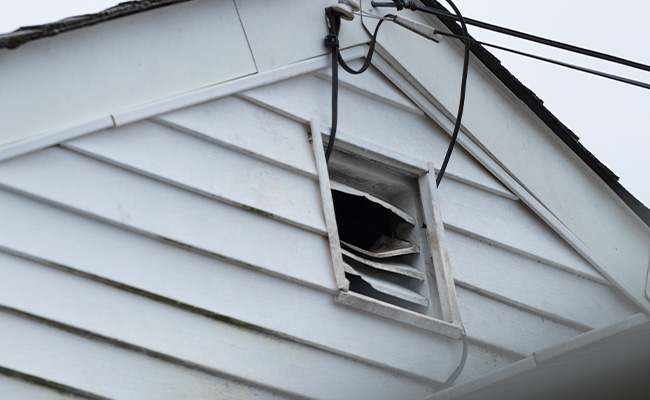
How to Prevent Squirrels from Returning
Removing squirrels from the attic is only the first step. Next is to ensure that they won’t return again. To prevent squirrels from making your home their own, it can be helpful to trim trees near your roofline to lessen the chance that the squirrels can climb up and onto your roof. You can also use a plastic owl to scare the squirrels (just make sure to move it periodically so it’s effective!). Additionally, a taste repellant composed of garlic, water, and vinegar is a natural and effective way to keep squirrels away. Finally, a motion-activated sprinkler system will spray animals (all pests, not just squirrels) any time they come close to your yard.
Call Pest Pros for Squirrel Infestations
With locations in Washington and Oregon, Pest Pros is the regional expert in pest control services. We understand common residential pest issues in the region, know what to look for, and can offer thorough, accurate explanations and recommendations as a result. If you’re interested in scheduling Pest Pros services check out the areas we serve and contact us by calling us or submitting the form below. We look forward to working with you!
Pest Pros, a Crawl Pros company, offers free home inspections to assess rodent activity in your crawl spaces, attics, and walls. Call our team at (866) 686-3118 or submit the form below to get started. Need more information? Keep reading to learn more about how experts — like Pest Pros — can help remove and exclude rodents from your home.
Finding out you have rats is almost always an unsettling discovery. Unless the idea of rodent roommates is an appealing one, the first thing you’ll probably think is, “How do I get rid of rats?”. The simple answer? Leave rodent removal and exclusion to the pros.
But let’s first talk about why there’s even a need for rodent exclusion, including the types of rats you might find, a recent increase in rat infestations, and the dangers rats pose for your home and health.
What Types Of Rats Are In My Crawl Space?
There are two main types of rats you might encounter in your Pacific Northwest home — the black rat and the Norway rat. These two species differ primarily in habitat. Black rats, also appropriately called roof rats, like to live up high and rarely come down. These are the rats you’ll see on telephone wires, in trees, and yes, in your attic. They can be identified by their light brown to black coloration, often with a lighter underside.
The Norway rat, also called the brown rat, is one of the most widespread common rat species. It can be identified by its large size and its brown or grey coloration. Norway rats stay low to the ground, infesting crawl spaces and foraging for scraps in your garbage cans. These rats will eat almost anything, including the contents of your cupboards.
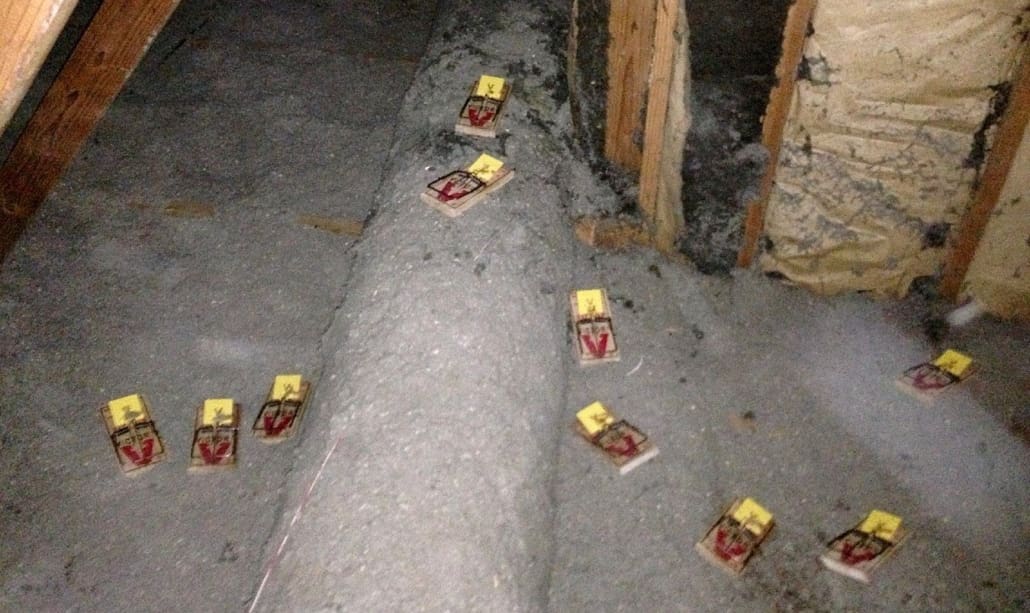
The Ratpocalypse Is Upon Us
Normally, here’s not enough territory for a large rat population, which is self-regulated through in-species control methods, including murder and cannibalism. However, with a change in primary food sources, rats have been forced to spread out, often traveling up to one mile to find food and breed. Their territorial area has now expanded, allowing for population multiplication.
The U.S. has recently seen an increase in rat populations and activity, which some have dubbed “The Ratpocalypse”. This is just one byproduct of the COVID-19 pandemic and the migration of humans from shared spaces to their homes.
Before the pandemic, rats’ primary food source was restaurants; but widespread closures pushed them to find food elsewhere, such as grocery stores and residential areas – including your home. These increased rat populations have become emboldened, leading to infestations and requiring residential rodent removal and exclusion by companies like Pest Pros.
Crawl Space Rat Trapping – Are Rats Dangerous?
While rat infestations are unpleasant, rats’ primary goals are to sleep, eat, and breed, which means that there will almost always be more than one rat in your crawl spaces and attics. This can get out of hand quickly because two rats can multiply to over a thousand in one year. This statistic alone is why rodent control is best left to those experienced in rodent removal and exclusion.
While this is undeniably alarming to consider, rats do tend to be afraid of larger animals — like humans — so they stick to walls, attics, and crawl spaces to avoid interaction. You may find them in your trash cans and cupboards, but they don’t like people and won’t attack. This doesn’t mean rats are now welcome visitors, but attacks are one fear that can be assuaged.
On the other hand, rats are known to carry diseases and parasites, transferred by the fleas and mites living on them. Studies have even suggested rats can carry coronaviruses, though the research is still relatively new for COVID-19 specifically. On their incessant search for food, rats can contaminate your home with said diseases and parasites while causing physical damage, including chewing through plywood, metal, and concrete — putting the infrastructure of your home at risk. Because of these dangers, investing in professional rat removal and exclusion from Pest Pros is the best way to protect yourself and your home.
Rat Removal & Exclusion – Removing Rats and Rat-Proofing Your Crawl Space
Rat removal is just that — removing existing rats. This is done through trapping and bait stations. One type of trap is a hydro-trap that uses compressed air to kill up to 24 rats at one time. Bait stations are placed outside of the home (not inside) with a chemical that acts as a blood thinner, leaving rats to burrow outside to die. Finally, old-fashioned snap traps, like the kind you’ve seen in cartoons and movies, are also still an effective method of rat removal.
During the process of rat exclusion — the prevention of new pests from entering the home — cement is poured down burrow holes, larger holes are filled with galvanized screening and mesh, and smaller holes are filled with a product called excluder — a non-rusting steel wool pad that will deter rats by cutting their faces as they try to chew. During the exclusion phase, there are 4 common things we look for: missing doors, busted screens, burrell holes near sewer or water lines in the crawl space, and the area between the furnace and crawl space.
Crawl space and attic rodent removal and exclusion are best left to the experts, like our team at Pest Pros, where we boast over 92% success in rat control. Using a variety of techniques, we pride ourselves on keeping you and your home safe. With a free home estimate, there’s nothing to lose and so much to gain, including peace of mind. Always included in your plan is removal and replacement (R&R), including 4 months of pest control. We always ask three questions: 1) Did we eliminate the issue? 2) Did we accidentally trap rodents in your home? And 3) Are the pests persistent? We work until we satisfactorily answer all of those questions and the problem is under control. That’s our guarantee.
Are There Any Rat Removal & Exclusion Home Remedies?
While we strongly suggest leaving rat removal and exclusion to the pros, snap traps are an at-home method you can try to remove rats. Rats are nearly blind, so they rub their bodies along baseboards to follow their scent as they traverse your house. Placing snap traps with peanut butter along your baseboards offers you a good shot at catching some of the rats in your home.
Rodent exclusion and more effective removal techniques, however, are very difficult for the average homeowner to accomplish, and simply attempting rat removal is only a temporary solution to eliminating rats from your home. To avoid continued rat infestation, consider investing in professional rat exclusion and removal by contacting our team at (866) 673-9626 or submitting the form below to get started.
Call Crawl Pros for Crawl Space Inspections
With locations in Washington and Oregon, Crawl Pros is the regional expert in crawl space and attic services. We understand common issues with houses in the region, know what to look for, and can offer thorough, accurate explanations and recommendations as a result. We’re so confident in our ability, in fact, that we offer a “Perfect Lifetime Guarantee” with all of our services, including water remediation services.
If you’re interested in scheduling Crawl Pros or Pest Pros services, please submit the form below. We look forward to working with you!

